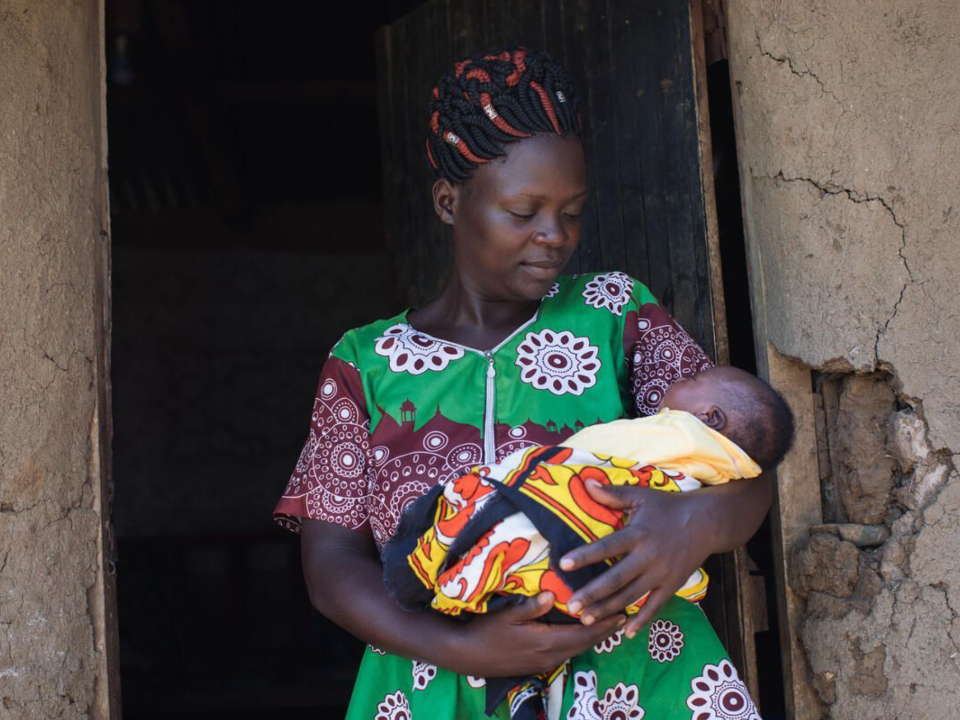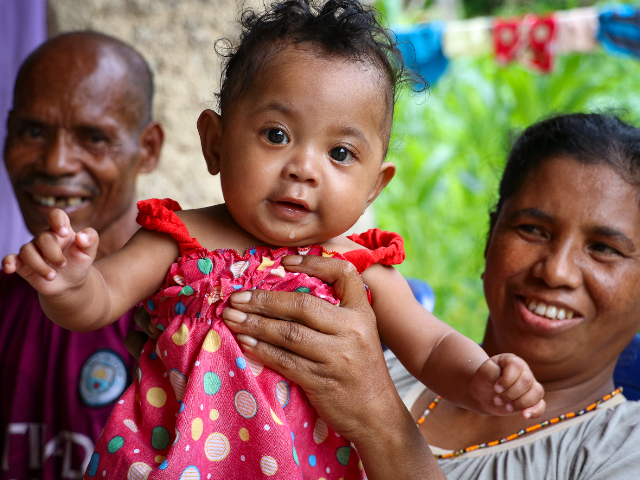
MAMI
Emily, 29, and her new baby she named Blessing, who was born at Kabula Health Centre in Bungoma, Kenya, which is supported by Save the Children. The Church of Jesus Christ of Latter-day Saints and Save the Children are working together in 2023 to help babies thrive. Photo by Sarah Waiswa, Save the Children; courtesy of Church News.All rights reserved.This story appears here courtesy of TheChurchNews.com. It is not for use by other media.
By Mary Richards, Church News
As part of its efforts to improve the health and development of young children and their mothers around the world, The Church of Jesus Christ of Latter-day Saints is collaborating with organizations that share similar goals.
The Church is currently supporting Save the Children in a five-year effort to address infant growth failure through the MAMI Care Pathway, which is part of the MAMI Global Network.This year, the Church donated $8 million to Save the Children to benefit more than 49,000 mother-baby pairs in Colombia, Kenya, Somalia, Nigeria, northwest Syria, Yemen and Mozambique.
MAMI stands for “management of small and nutritionally at-risk infants under 6 months and their mothers.” The program looks at the factors that influence negative outcomes for young babies, including maternal nutrition and poor care before and after birth.
The MAMI Care Pathway provides fundamental services including community screening, early identification of high-risk pregnancies, improved maternal nutrition and quality newborn care through water, sanitation and hygiene support.
Halima, whose last name was not given, is one participant in Save the Children’s efforts in Wajir County, Kenya. When she was expecting her daughter Nadia, she did not have access to medical services and therefore did not receive proper prenatal care — such as regular checkups and recommended vitamins.
Halima faced several health issues during her pregnancy, including poor nutrition resulting in a low body weight. Support she received through MAMI included breastfeeding counseling, monitoring and managing risk factors to ensure adequate nutrition for baby Nadia.
Through the support sessions and follow-up visits, Halima learned about the importance of eating a balanced diet and using locally available nutritious foods, which helped improve her health and, in turn, her baby’s health.
“The [MAMI] support program where I was enrolled in [has] really helped me know how to take care of myself and to better take care of my baby,” Halima said.
The donation from the Church has helped Save the Children provide basic equipment and facilitate training in health clinics — for example, using mid-upper arm circumference measurement tapes to identify malnutrition in young children and begin interventions, providing pregnant women nutritional supplementation, identifying high-risk pregnancies and following up, and increasing reach to pregnant adolescents.
Halima said after all that she learned, she wanted to help other mothers have the knowledge she has. Now she is a teacher for other women in her village.
“I encourage mothers to go for health checks as early as possible when they learn that they are pregnant. I also visit mothers who are nursing infants and advise them accordingly,” she said.
In addition to the global effort to improve maternal and child nutrition through local wards and stakes, the Church’s support for global organizations includes a combined $44 million donation announced in August and $10 million to UNICEF for child nutrition efforts this year.
The Church has additional resources for maternal and child nutrition at churchofjesuschrist.org/life/child-nutrition-resources/additional-resources.
